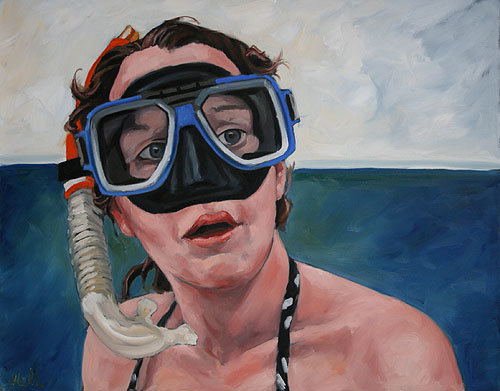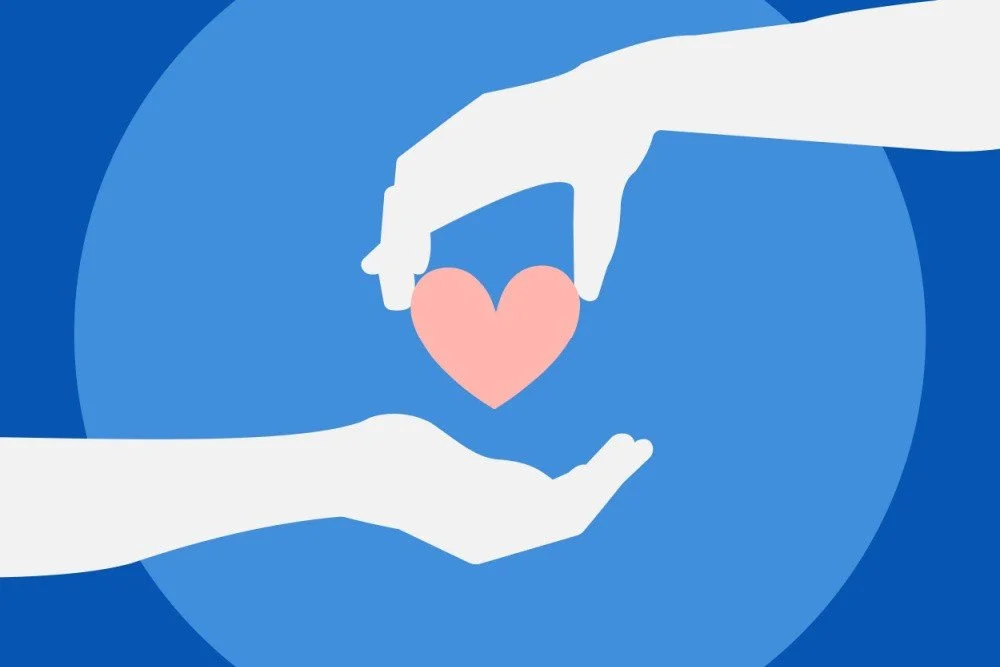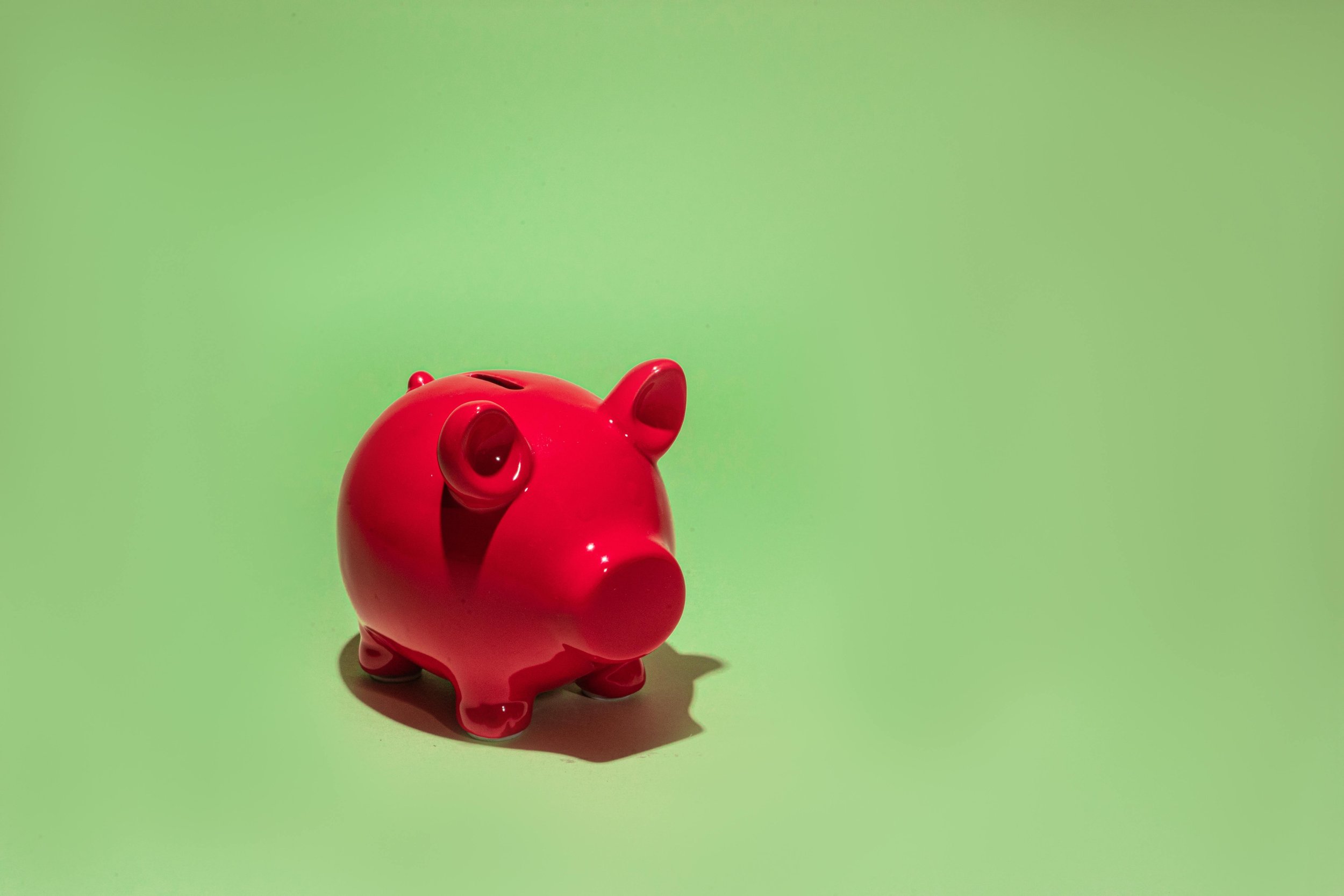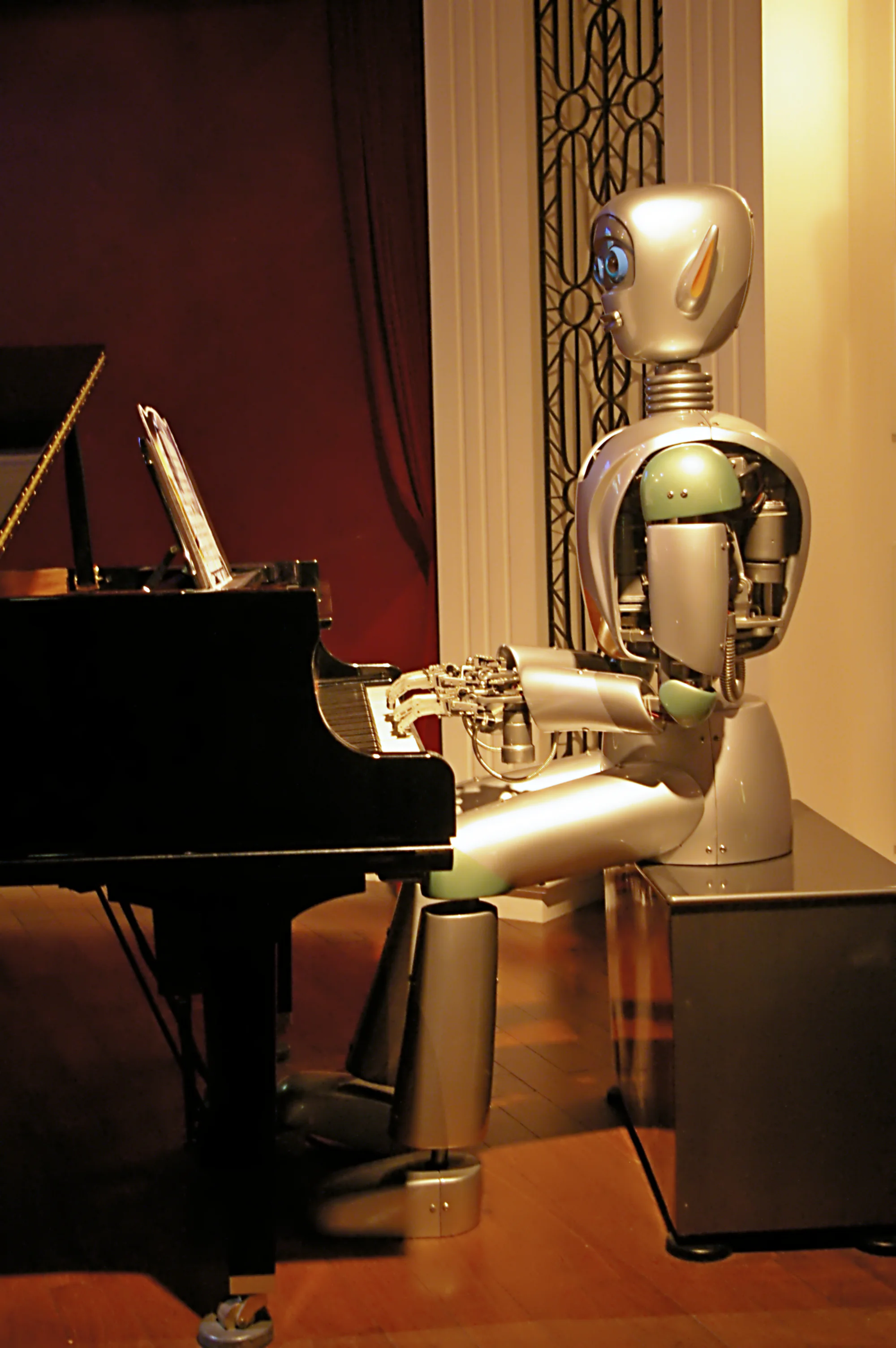From robotic tour guides to Lady Gaga's recent Grammy performance, how is the field of robotics shifting ideas of work and art in today's world? AMT Lab contributor Yasmin Foqahaa takes a look at the most recent events at the intersection of robotics and the arts.
Crowd-Sourced Curating at the Brooklyn Museum
As the arts world continues to discuss and reconsider what it means to participate in the arts, the Brooklyn Museum is testing a new construct of audience engagement with its current exhibit GO: A Community-Curated Open Studio Project. GO combines two existing tactics: inviting the public into studios of working artists to see where and how artwork is made, and crowdsourcing the selection of that artwork through an open voting process. Unlike ArtPrize, an art competition in Grand Rapids, MI, that awards cash prizes to artists as determined by public vote (juried awards were added in 2012) and cited by the Brooklyn Museum as inspiration for the current exhibit, GO asks participants to nominate artists—rather than specific pieces—whose work they would like to see exhibited at the museum. The catch is that to be eligible to vote, participants must first visit at least five artist studios, which in turn requires that the museum be able to track where people go. The answer is a multiphase project begun this past September and culminating in an exhibit of Brooklyn artists, on display through February 24.
To participate, the museum first asked individuals to register on the GO community project website. Then, over a two-day open studio event involving nearly 1,800 artists in 46 Brooklyn neighborhoods, participants “checked-in” at each studio visited by way of a unique number displayed onsite. By sending that number to the museum either by text message, a free custom iPhone app, or the web, participants documented where they traveled. Those who checked-in at five or more studios received an email with instructions on how to vote, having earned the opportunity to nominate up to three artists. The museum tallied the results, sent two of its curators to review the work of the top ten nominated artists, and selected five to exhibit.
But GO didn’t stop when the voting was done. By asking participants to check-in, the museum was able to analyze how many people went where, when, and what platform they used to check-in, all of which was then shared in a series of posts on both the GO blog and through the Statistics section of the GO website. (Among those findings: Despite multiple mobile-friendly options designed especially for the event, nearly half of the 6,100+ participants chose to simply write down studio numbers throughout the day and check-in via the project website once back home, surprising project coordinators.) The website also provided a forum for participants to discuss (in real time and afterward) what they did and did not like about the process, share stories from their studio visits, learn about nominated artists, receive updates on the creation of the exhibit, and provide reactions to the final exhibit itself.
The exhibit has been criticized by some for not aptly representing the rich artistic quality Brooklyn holds, and is generating commentary on the age-old curatorial question of who should decide what constitutes “good” art. While a worthwhile debate, it seems to belie the larger point of the project: to expose people to the creative process, and ideally, to facilitate a better understanding of it. On that score, GO appears to have succeeded mightily. As project coordinators tagged entries in the Shared Stories section of the website, one of the most frequent themes to emerge was that of discovery. It seems that by opening studio doors, inviting people to participate in the curatorial process, and sharing reactions online, GO fostered meaningful interactions among artists, voters, volunteers, and museum staff, and in the process, created an innovative approach to engage audiences in the arts.
The Space: A Summer of English Arts on a New Experimental Platform
This Olympiad summer, the arts in the UK will be consolidated onto a single online platform called The Space. What’s more? The content on The Space is being provided for free! There’s room, or more fittingly, seats for all, at venues such as the World Shakespeare Festival or Yayoi Kusama’s Obliteration Room at the Tate.
“The Space is a new way to access and experience all of the arts – for free.Available on computer, tablet, smartphone and connected TV, The Space invites you to take part in the biggest summer of arts the UK has ever seen, whenever you want it and wherever you happen to be. ”
 The Arts Council England in partnership with the BBC created The Space as a way for people from all over the world to experience the country’s rich and dynamic arts scene. In effect, a summer of English arts to all! (Albeit without the English summer and its cool Constable Skies). So The Space is certainly something to look forward too because it will feature some of the UK’s best theatrical productions, dances, musical performances, art exhibits, poetry readings, along with content that has been specifically created for the platform.
The Arts Council England in partnership with the BBC created The Space as a way for people from all over the world to experience the country’s rich and dynamic arts scene. In effect, a summer of English arts to all! (Albeit without the English summer and its cool Constable Skies). So The Space is certainly something to look forward too because it will feature some of the UK’s best theatrical productions, dances, musical performances, art exhibits, poetry readings, along with content that has been specifically created for the platform.
Through the course of the summer, the performances staged in theatre, dance, film, and music will be showcased via recordings and live streaming while exhibitions at museums and galleries will be presented via behind-the-scenes footage, photographs, and interviews with artists and curators. The Space will also feature experimental and interactive digital art that can be experienced on the platform itself. Finally, for poetry and literature, there will be a variety of formats, including podcasts, poetry readings, and interactive audio-visual timelines such as the 60 Years in 60 Poems.
While live streaming and online exhibits aren’t entirely new to the performing or visual arts, the presentation of all the arts, all at once, and in one place, is certainly a novelty. As such, The Space is truly remarkable because it is no ordinary task to fit an entire country’s arts scene onto a single platform! If other countries too made their arts available on interactive, well designed platforms, the internet would surely be a destination in itself. Perhaps the introduction of The Space suggests that it already is?!
The Space also signals another significant trend; the quality of arts being made available online continues to improve. Whether it is in opera, film, or even, educational art history, we are privy to some great material. At the same time, the problem with the online format is that there are times when our Google searches are less than serendipitous and our social networks less than social. On such days, we miss out on a lot of online events, projects, and experiments.
Yet on The Space, what will remain certain is most certainly the art. And at the end of each adequately sunny day across the Atlantic, the platform will be populated with new content for visitors to see, hear, read, and experience. Moreover, the content on this living library of the arts will be available until October. After that, it will be time, once again, to continue our search for the arts on the virtual infinity of the internet (The outer Space).
Social Media as Alternative Exhibiton Space
 Myspace has long been a mecca for musicians who are looking to get the word out and start a following, but until recently visual artists have not capitalized on the aspects social networking with the same fervor.
Myspace has long been a mecca for musicians who are looking to get the word out and start a following, but until recently visual artists have not capitalized on the aspects social networking with the same fervor.
This is beginning to change as visual artists are now using this new medium as a way around established gatekeepers, creating open alternative arts spaces online. Ever since discovering Miranda July's Learning to Love You More in undergrad I've been interested in crowd sourced art projects, and with new social mediums like Facebook and Twitter, artists are now able to easily create a community that is interested and involved in their artwork.
Matt Held, a Brooklyn based painter, started a Facebook group in order to create a pool of images to paint from by utilizing his friends' profile pictures. His Facebook group, "I'll have my Facebook portrait painted by Matt Held" has sense grown exponentially.
Matt explained, "I have always painted from photos and was having a complete painters block. I needed an exercise in skin tone and did one of my wife from her profile. We put the group up and I thought maybe if 50 people joined, I would be able to work through the block. People liked it and as I said, this quick communication has proved true, there are nearly 3,400 people in the group now. It's been a really great tool, really great!"
Matt has recently completed his 37th portrait in the four months since beginning this project, and is looking forward to exhibiting all 200. Social media is quickly creating a rich creative playground for visual artists to explore, and Matt is realizing how large the demand is for creative projects online.
"It's a perfect vehicle to combine mediums with technology and connect with other artists, gallery owners, curators, critics, editors, etc. very quickly. Facebook is set up so perfectly for that and now as other sites like Twitter broaden their user base, this level of instant communication with people around the world - not via the news, but from the mouths of people - it's just an inexhaustible resource."
Outside of the standard Facebook/Myspace/Twitter sites, artists are creating their own networks. Myartspace and the Brooklyn Arts Project are both new social networks for creative artists that capitalize on the accessability of the internet, and the networking opportunities that can be created for artists.
These sites both have an ongoing blog of current events, as well as user submitted blogs. Curators are invited to post calls for artists, and on the Brooklyn Arts Project site there is an online store where you can purchase framed art prints of featured artwork. These cites are creating a depth of relevant content as well as a definitive sense of community that is important to any group of artists.
Some galleries are also using their websites as interesting alternative exhibition spaces. 20X200 is a small gallery space on Manhattan's Lower East Side that releases limited edition art prints at incredibly low prices. Jen Bekman has made a name for herself by making art available to everyone.
(limited editions × low prices) + the internet = art for everyone
The site introduces two new artworks every week, one photograph and one work on paper. They are available in three sizes that vary in price from $20 for a small print, to $200 for the largest size.
In the days/weeks/years to come, visual artists will continue to find new ways of utilizing the web to create interactive and crowd sourced projects as well as to venture beyond the pristine white walls of the gallery and create new avenues for audience engagement.
I agree with Matt Held when he said "One of the things I have noticed in the past few weeks are more and more artists doing different things. One artist updated her status every 60 seconds for 16 hours as a means of opening dialogue about self exposure, narcissism, social controls, etc. Another is trying to put together a large group, 500 people, to do a massive tweet at the same time with super secret instructions. I am quite certain that we are just seeing the beginnings of the exploration on the creative use of social networks as an artistic platform."








